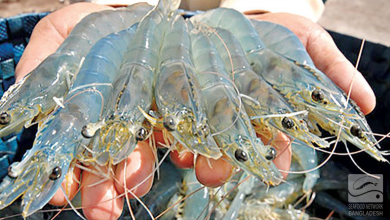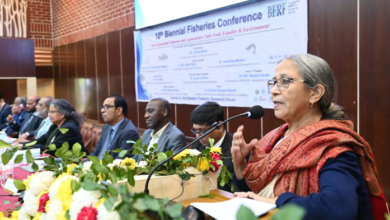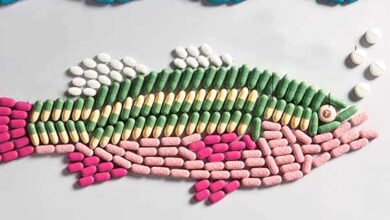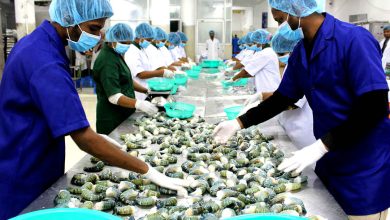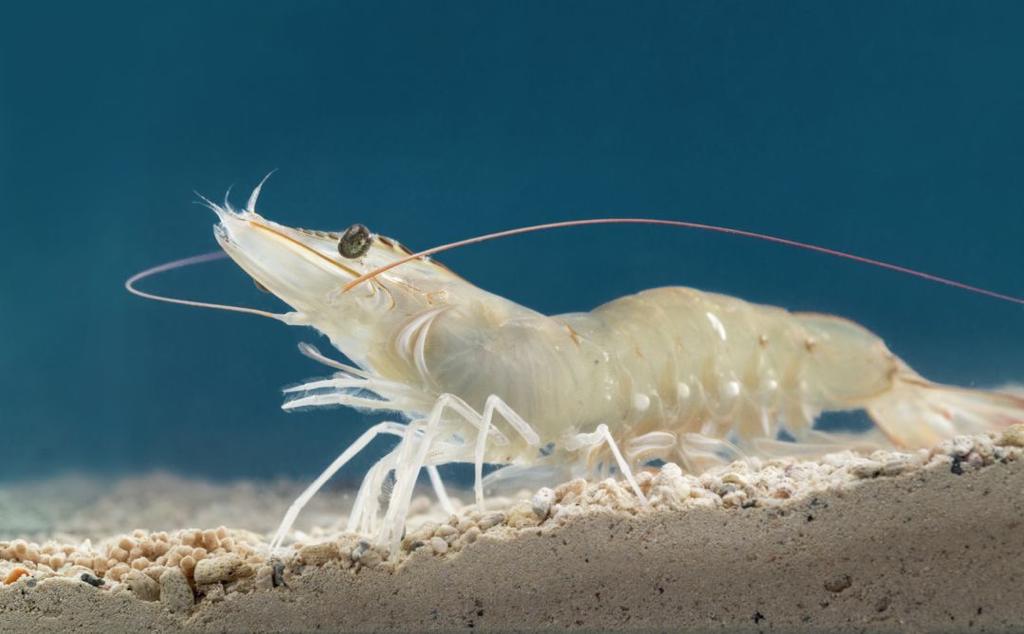
Effective maintenance of water quality is necessary for intensive vannamei shrimp farming. Efficient handling of vannamei shrimp culture is essential for optimizing the effectiveness of the invested money. This efficiency simplifies the process of monitoring water quality parameters during the farming, making it easier for farmers to detect changes or fluctuations. Key parameters for assessing water quality include pH, dissolved oxygen (DO), temperature, turbidity, total vibrio count, alkalinity, salinity, as well as the type and quantity of plankton.
Optimum Water Quality Parameter for Vannamei shrimp farming:
There are including some optimum water quality parameters for shrimp L. vannamei culture:
| SL No | Water Quality Parameter | Optimum range |
| 1 | Salinity | 12-25 ppt |
| 2 | pH | 7.5-8.5 |
| 3 | Alkalinity | > 120 ppm |
| 4 | Total hardness | > 1000 ppm |
| 5 | Calcium hardness | > 150 ppm |
| 6 | Magnesium hardness | > 450 ppm |
| 7 | Total Ammonia Nitrogen | < 1 ppm |
| 8 | Nitrite | < 0.5 ppm |
| 9 | Hydrogen sulfide | < 0.01 ppm |
| 10 | Dissolved Oxygen | 5.0-9.0 ppm |
| 11 | Temperature | 25-30°C |
| 12 | Carbon dioxide | 20 ppm |
| 13 | Chloride | 300 ppm |
| 14 | Sodium | 200 ppm |
| 15 | Unionized Ammonia (NH3) | 0.03 ppm |
Salinity:
Bangladesh has a high rate of evaporation, therefore during the summer, salt concentration in ponds progressively rises. Salinity can both speed up and slow down growth. Shrimps that are younger seem to be able to endure a greater range of salinity variations like adults. Vannamei shrimp specie’s post-larvae can withstand vast salinity variations, which have no impact on their survival or growth. Vannamei shrimp can withstand a wide range of salinity in pond conditions, from as little as 12 ppt to as much as 25 ppt. When using brackish water species, this should be taken into account as salinity levels may rise above their tolerance threshold. In these circumstances, the water needs to be periodically changed, either with pumps or through tidal exchange.
pH:
The pond’s fertility or prospective productivity is indicated by the pH of the water. Water with a pH of 7.5 to 8.5 is typically thought to be ideal for farming Vannamei shrimp. Shrimp development and survival may potentially be harmed by water that is too alkaline (pH > 9.5) or too acidic (>5.0). The pH of pond water typically reaches 9.5 in late afternoon in ponds that are overly rich in phytoplankton. Lime can be added to water to raise the pH and reduce acidity. However, the pH is typically lower when daylight arrives. Water exchange should be used to correct excessive plankton development because it can reduce the oxygen content of pond water. Lime can be added to water to raise the pH and reduce acidity.
Dissolved Oxygen:
Their growth is slowed down and their susceptibility to disease is lowered over time by prolonged exposure to the stress of low oxygen concentration. Shrimp stocks typically experienced mass mortality (anoxia) as a result of oxygen depletion.
Two processes, including the diffusion of ambient air and a byproduct of photosynthesis, contribute to the dissolved oxygen in the pond’s water. Water temperature, respiration, and the amount of organic matter are three main influences on the dissolved oxygen content in pond water.
The following actions can be taken to reduce the pond’s loss of DO:
- Exchange of fresh water into the pond during renewal, either via tidal flow or pumps.
- Artificial aeration system installation.
Nitrogen Compound:
Different types of organic nitrogen, including nitrate, nitrite, ammonia, and others, can be found in ponds. The metabolism of fish and the bacterial breakdown of organic materials produce ammonia nitrogen. The percentage of total ammonia that exists in a unionized state is controlled by the water’s pH and temperature. The height of the phytoplankton bloom, when the majority of them died, is typically when the total ammonia nitrogen concentration is highest. Because of the high quantity of carbon dioxide, the pH of the water is low. According to studies, exposure to an ammonia concentration of 0.45 mg NH3-N/1 liter would result in a 50% reduction in shrimp growth.
Suitable Temperature for Vannamei shrimp farming:
The activity of the cultured animal is greatly influenced by the temperature of the water. Every 10°C increase in temperature is said to double the rate of chemical and biological reactions. Therefore, it follows that aquatic creatures have a higher requirement for dissolved oxygen in warmer than in cooler water. Maintaining the ideal temperature between 25 and 30 °C is very crucial for shrimp growth.
Hydrogen sulfide, H2S:
Organic matter that builds up and creates a thick layer of organic deposits at the bottom is chemically reduced to form H2S. If it increase, the bottom soil turns dark and has a foul odor. The shrimps appear to lose their equilibrium at concentrations of 0.1–0.2 ppm and perish quickly at 4 ppm.
It would not be cost-effective to use iron oxide (70% ferrous oxide) to remediate the bottom soil that contains significant quantities of H2S. The more affordable method is to often interchange the water in the pond to avoid H2S buildup.
Alkalinity and Total Hardness:
Alkalinity, a measurement of the acid-neutralizing ability of water, shields culture species from the main effects of pH shift. Usually, biological processes can alter the alkalinity of water by producing and consuming acids and bases. However, if alkalinity is discovered to be extremely low (20 ppm), this inhibits phytoplankton development. Therefore, it is important to keep the alkalinity level within a desirable range (75 to 150 ppm).
The total metal cations, mainly calcium and magnesium, are measured using total hardness. According to its hardness, water is divided into four categories: mild (0–75 ppm), medium (75–150 ppm), high (150–300 ppm), and very hard (>200 ppm). Saline water often has a much higher hardness than freshwater because it includes more minerals. Calcium is one of the minerals required for the production of the exoskeleton shell of the Vannamei shrimp.
One of the key elements in enhancing vannamei shrimp growth, color, and survival is water quality. The regular maintenance of water quality parameters is the essence of water quality management. In order to prevent stress, which could hasten the development of many diseases in shrimp, it should be kept at the ideal level.
Farhana Islam
Agriculturist, Researcher
Fisheries Resource Management, CVASU

